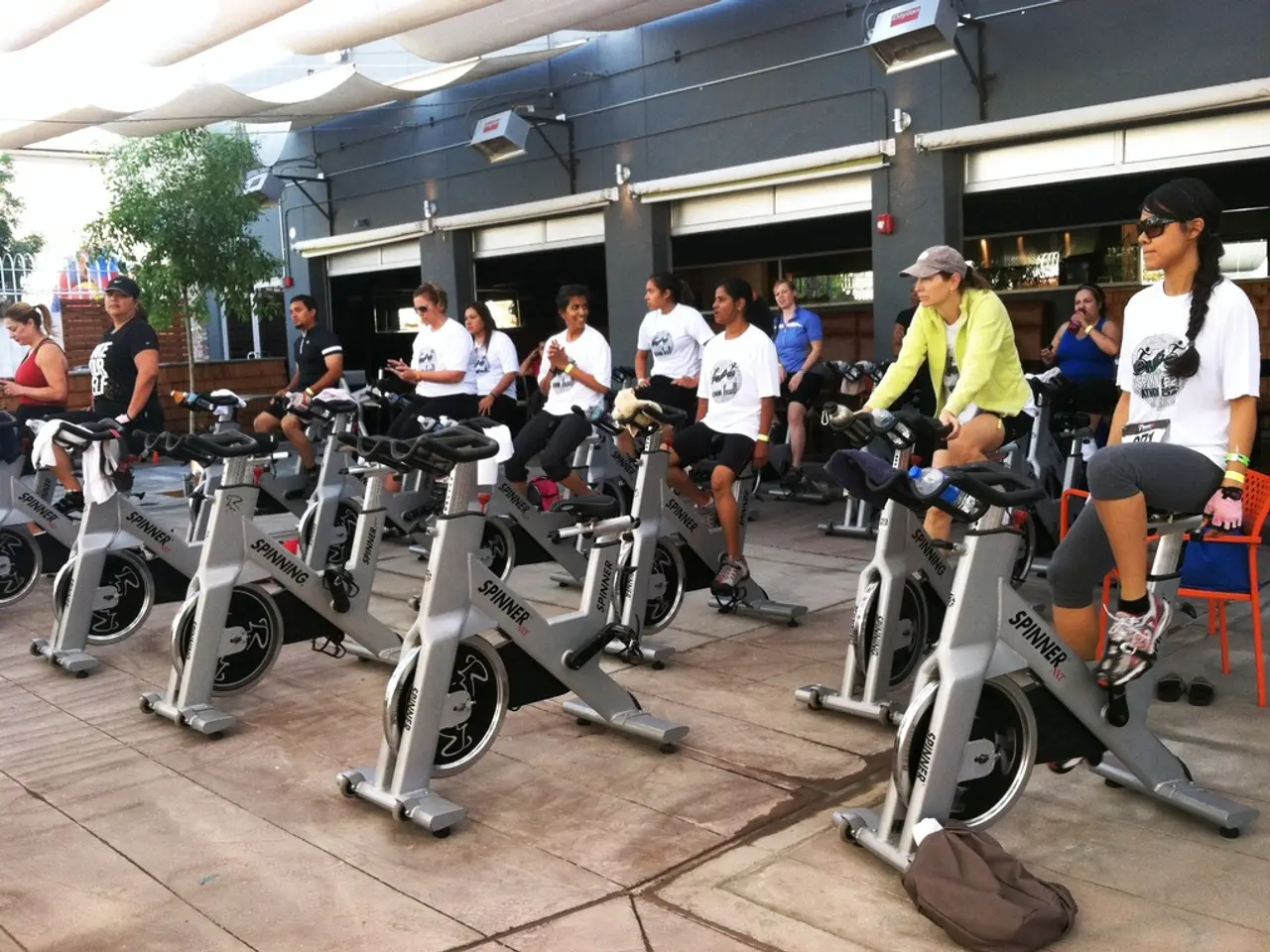For Those Suffering from COPD: Regular Exercise May Help Prevent Hospital Visits
Incorporating regular exercise into your daily routine can offer numerous benefits for individuals living with chronic obstructive pulmonary disease (COPD). Exercise not only improves exercise capacity and reduces breathlessness (dyspnea), but also enhances the ability to perform daily activities, improves emotional well-being, and boosts strength and stamina [1][2][5].
For COPD patients, recommended types of exercise include:
- Endurance (aerobic) training: Aim to engage in aerobic exercises such as walking, jogging, cycling, or swimming for 3-5 times a week, at moderate intensity, for 20-60 minutes. This improves cardiovascular fitness and exercise tolerance [1].
- Resistance (strength) training: Work on strength training exercises about twice a week, focusing on major muscle groups to increase muscle strength and functional capacity [1][2].
- Respiratory muscle training: Perform respiratory muscle exercises regularly, targeting the breathing muscles. Aim for 4-6 days a week, at 30-35% of maximum inspiratory pressure, for up to 30 minutes [1].
Combining resistance and aerobic exercises may provide synergistic anti-inflammatory and functional benefits beyond either modality alone [2]. Pulmonary rehabilitation programs, which typically last from 4 to 12 weeks, are ideal for delivering a comprehensive exercise regimen that includes these exercise types, along with education and support, to improve long-term self-management and reduce hospital admissions [1][5].
Exercise can be performed in supervised clinical programs using specialized or minimal equipment, and both have shown similar effectiveness in improving exercise capacity and symptoms [4]. For those who are not candidates for pulmonary rehabilitation, regular exercise, such as walking, still offers significant benefits.
Regular exercise offers many health benefits for people with COPD, including:
- Strengthening the heart and cardiovascular system
- Increasing endurance
- Lowering blood pressure
- Improving muscle tone and strength
- Bettering balance and joint flexibility
- Strengthening bones
- Reducing body fat
- Improving sleep
- Easing symptoms such as shortness of breath, chronic cough, fatigue, wheezing, and chest tightness
- Reducing stress, tension, anxiety, and depression, and boosting self-image and self-esteem
Remember, exercise won't harm your lungs; experiencing shortness of breath during exercise is an indication that your body needs more oxygen. To maximise the benefits, aim to inhale for two seconds and exhale for four seconds during exercise. Exercising every other day helps maintain a regular exercise schedule.
For those with moderate to severe COPD, a pulmonary rehabilitation program can be particularly beneficial. In pulmonary rehab, an expert team helps create an exercise program tailored to the individual's needs. The benefits of completing a pulmonary rehabilitation program include fewer flare-ups, fewer visits to the ER or urgent care, a better quality of life, less anxiety, decreased shortness of breath, and fewer hospitalizations.
Sources:
[1] American Lung Association. (2021). Pulmonary rehabilitation. Retrieved from https://www.lung.org/lung-health-diseases/lung-disease-lookup/pulmonary-rehabilitation
[2] National Heart, Lung, and Blood Institute. (2019). Pulmonary rehabilitation. Retrieved from https://www.nhlbi.nih.gov/health-topics/pulmonary-rehabilitation
[3] National Institute for Health and Care Excellence. (2019). Pulmonary rehabilitation in people with chronic obstructive pulmonary disease. Retrieved from https://www.nice.org.uk/guidance/ng106
[4] National Institutes of Health. (2018). Pulmonary rehabilitation for people with chronic obstructive pulmonary disease. Retrieved from https://www.ncbi.nlm.nih.gov/books/NBK539399/
[5] British Lung Foundation. (2021). Pulmonary rehabilitation. Retrieved from https://www.blf.org.uk/support-for-you/treatment-and-support/pulmonary-rehabilitation
Individuals with COPD can reap extensive benefits from incorporating medical-conditions such as endurance training, resistance training, and respiratory muscle training into their daily health-and-wellness routine. Endurance training, like walking or swimming, enhances exercise capacity, reduces breathlessness, and boosts cardiovascular fitness. Resistance training focuses on major muscle groups to improve muscle strength and functional capacity. Regular respiratory muscle training aims to target the breathing muscles, helping COPD patients perform daily activities with ease. Combining both resistance and aerobic exercises may provide additional anti-inflammatory and functional benefits. Pulmonary rehabilitation programs, which encompass exercise, education, and support, are particularly beneficial for those with moderate to severe COPD, helping to reduce hospitalizations and improve overall quality of life. Regular exercise not only strengthens the heart and cardiovascular system, but also lowers blood pressure, improves muscle tone and strength, enhances balance and joint flexibility, boosts bone density, reduces body fat, and improves sleep. It also eases COPD symptoms such as shortness of breath, cough, fatigue, wheezing, and chest tightness. Furthermore, regular exercise can help reduce stress, tension, anxiety, and depression, while fostering a positive body image and self-esteem.




